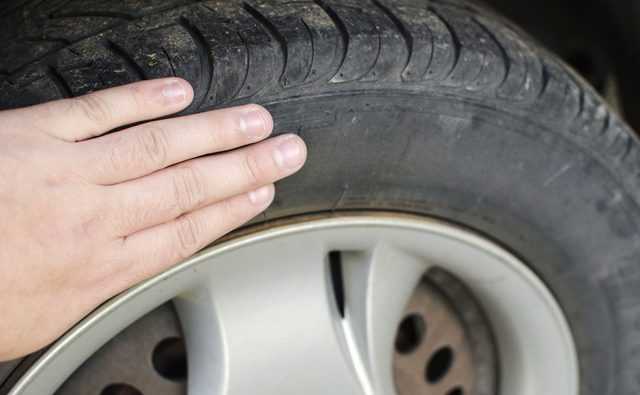When it comes to checking tire tread, there are a number of methods that can help you know if it’s time to replace a tire. Heavily worn tread will prevent a tire from performing as designed and can lead to unsafe driving conditions. One of the simplest, most common ways to check tread depth requires nothing more than a penny and a few moments of your time.
In the United States, tire tread depth is measured in 32nds of an inch. New tires typically come with 10/32” or 11/32” tread depths, and some truck, SUV and winter tires may have deeper tread depths than other models. The U.S. Department of Transportation recommends replacing tires when they reach 2/32”, and many states legally require tires to be replaced at this depth.
The idea of the penny test is to check whether you’ve hit the 2/32” threshold. Here’s how it works:
Place a penny between the tread ribs on your tire. A “rib” refers to the raised portion of tread that spans the circumference of your tire. Tire tread is composed of several ribs.
Turn the penny so that Lincoln’s head points down into the tread.
See if the top of his head disappears between the ribs. If it does, your tread is still above 2/32” , If you can see his entire head, it may be time to replace the tire because your tread is no longer deep enough.
When performing the penny tire test, remember not only to check each tire, but to check various places around each tire. Pay special attention to areas that look the most worn. Even if parts of your tread are deeper than 2/32”, you should still replace the tire when any areas fail the penny test.
Consistent wear around the whole tire is normal, but uneven tread wear could be a sign of improper inflation, wheel misalignment, or a variety of other things. If you see uneven tread wear, you should have a technician inspect your vehicle.
A simple way to check your tire tread depth is by using a tread depth gauge.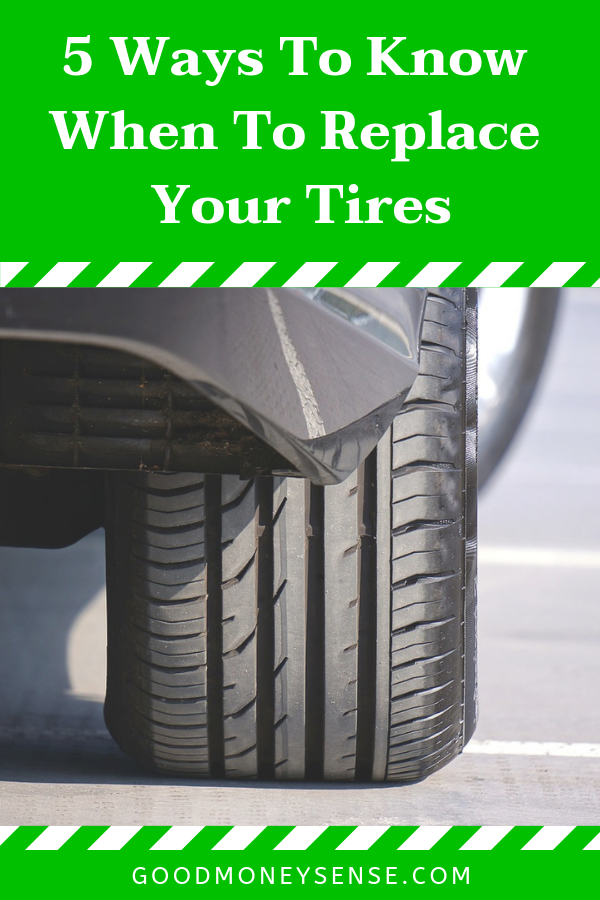 You can find tire tread depth gauges at your local auto parts store. There are many models available, but an inexpensive simple graduated probe gauge will work just fine. All you have to do is stick the probe into a groove in the tread and press the shoulders of the probe flat against the tread block and read the result. All gauges should measure in both 32nds of an inch and millimeters.
You can find tire tread depth gauges at your local auto parts store. There are many models available, but an inexpensive simple graduated probe gauge will work just fine. All you have to do is stick the probe into a groove in the tread and press the shoulders of the probe flat against the tread block and read the result. All gauges should measure in both 32nds of an inch and millimeters.
Another indicator of worn out tread already lives in your tires themselves. Every performance, light truck, or medium commercial tire comes equipped with indicator bars (or wear bars) embedded between the tread ribs at 2/32”. They’re there to help you monitor tread depth and make decisions about tire replacement. Just look to see if the tread is flush with the indicator bars. If they are, it’s time to replace the tire.
While the penny tire test does deliver on what it promises – indicating whether tread has reached the legal limit – it may not be the best indicator of whether your tires are safe for the road.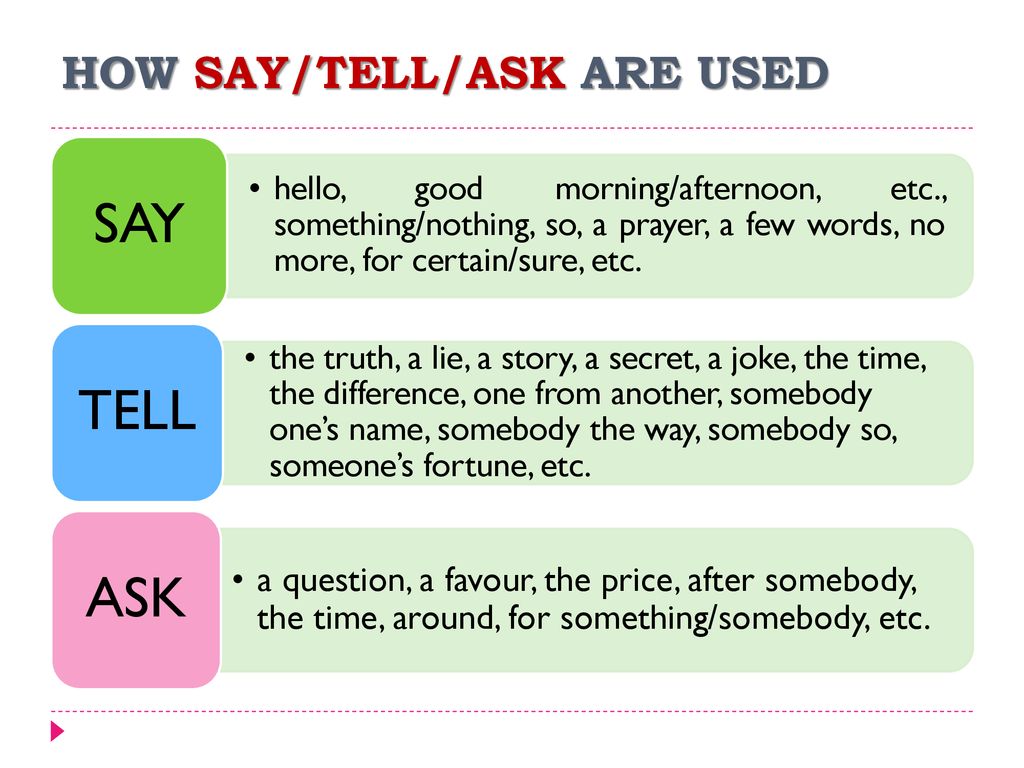 Tire performance can diminish significantly before your tread hits 2/32”. Even though the law deems fit for safe driving may not prevent you from hydroplaning or losing control in rainy, slushy conditions. If you think your tires may be close to needing replacement, have them checked out by a licensed mechanic.
Tire performance can diminish significantly before your tread hits 2/32”. Even though the law deems fit for safe driving may not prevent you from hydroplaning or losing control in rainy, slushy conditions. If you think your tires may be close to needing replacement, have them checked out by a licensed mechanic.
Calculate Out-The-Door Price
close
With this easy test, a penny can buy you peace of mind when it comes to your tires and safety.
Place a penny head first into several tread grooves across the tire. If you always see the top of Lincoln’s head, your treads are shallow and worn. If this is the case, your tires need to be replaced.
If part of Lincoln’s head is always covered by the tread, you have more than 2/32 of an inch of tread depth remaining. This means you probably don’t need new tires.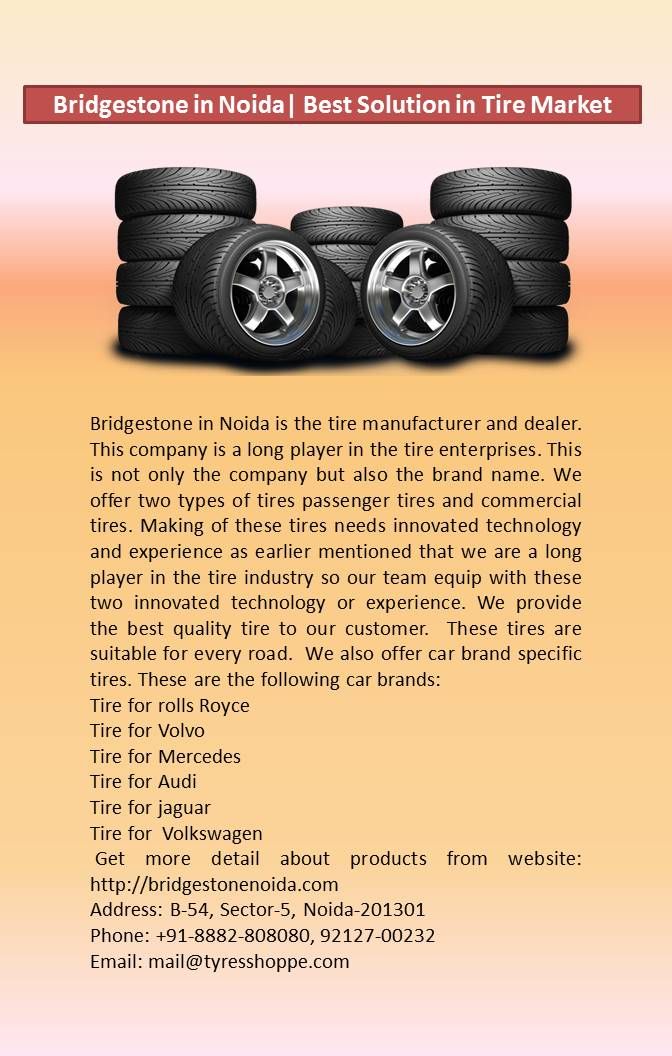
When your tire treads are worn, your car may respond poorly in adverse weather conditions like rain and snow. With good treads, your car will grip the road better. Also, having insufficient tread is considered illegal in many states. And finally, worn treads can make other parts of your car wear prematurely.
Potential Problem Areas:
When it’s time to change your tires, your Firestone Complete Auto Care dealer wants to make purchasing a new set as simple as possible. We have the best selection of quality tires to fit your vehicle, your budget and your driving style. From economy to ultra high performance tires - in the size you need from brands you trust, including our well-known Bridgestone and Firestone brands - you can find what you need right here.
We have the best selection of quality tires to fit your vehicle, your budget and your driving style. From economy to ultra high performance tires - in the size you need from brands you trust, including our well-known Bridgestone and Firestone brands - you can find what you need right here.
Make a selection from the following options:
Shop for Tires
Find a Store Near You
Schedule an Appointment
{{storeNumber}}
{{storeName}}
{{link-icon "Call Us" mobileCallLink null "call-cta"}} {{link-icon "Directions" directions "_blank" "directions-cta"}}
{{address}}
{{city}}, {{state}} {{zip}}
{{#if activeFlag}} {{#ifCond mystore "or" myPreferredStore}} {{#ifCond storeType 'eq' "TPL"}}
*Call store for appointment {{phone}}
{{else}} {{#if onlineAppointmentActiveFlag }}
{{#if myPreferredStore}}
{{else}}
*Call store for appointment {{phone}}
{{/if}} {{/ifCond}} {{else}} {{#ifCond storeType 'eq' "TPL"}}
*Call store for appointment {{phone}}
{{else}}
Schedule Appointment {{#if onlineAppointmentActiveFlag}} {{else}}
*Call store for appointment {{phone}}
{{/if}}
{{/ifCond}} {{/ifCond}} {{else}}
*Temporarily Closed Due To: {{temporarilyClosedReason}}
{{/if}} {{#if isMilitaryStore}}
*This location is on an active US military base.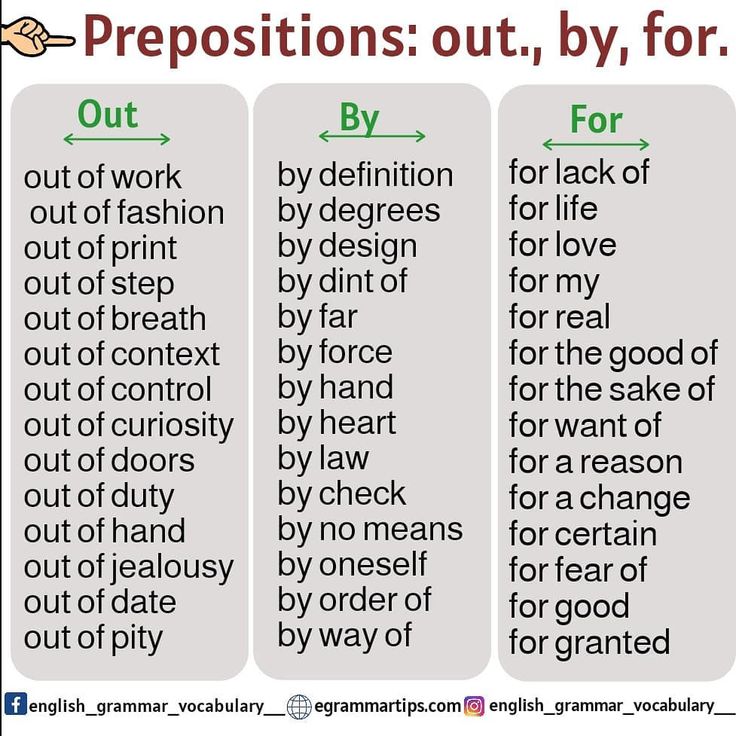 You may need military ID to access the location.
You may need military ID to access the location.
{{/if}}
We have already written how to check the geometry of the body, generator, ignition system, battery, engine, running gear when inspecting a used car. In this article we will tell you how to check the tires when buying a used car.
Some experts say that using used tires is like playing Russian roulette - you only have to rely on luck. And to make the case really happy, you should check the wheels as carefully as possible.
Tires are a guarantee of safety on the road.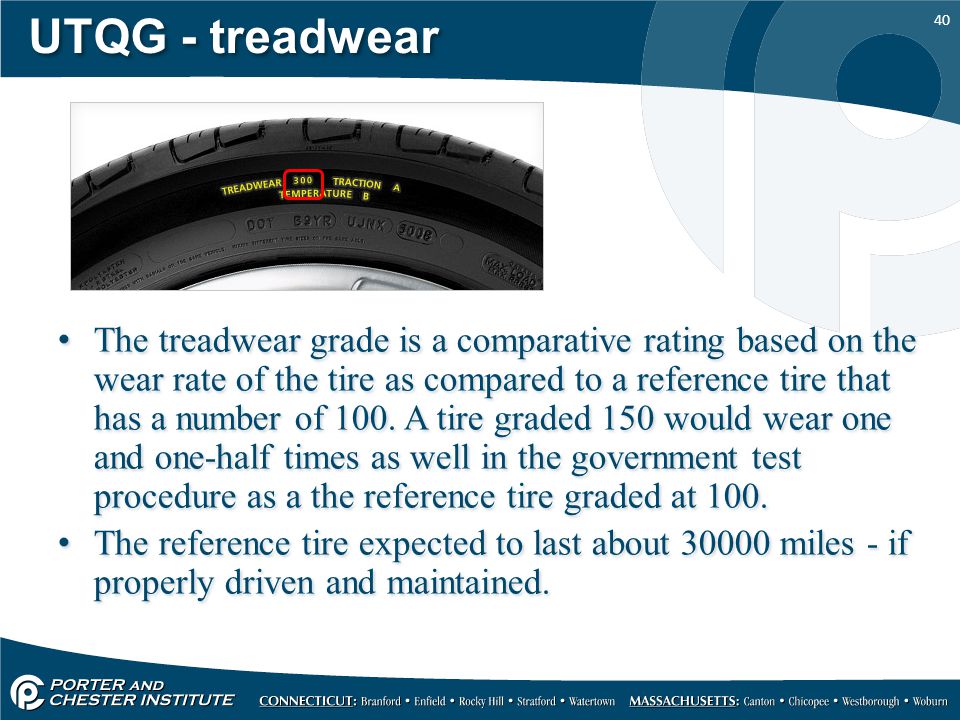 When inspecting a car and used tires, check the following:
When inspecting a car and used tires, check the following:
Each of the parameters is important in its own way, and therefore ignoring at least one of them can significantly reduce the level of safety on the road.
We recommend checking first. If the tires have served their allotted time, further operation does not seem rational. This is easy to do - the date consists of two digits: the week number and year of issue, applied to the outside of the rubber. If, upon inspection of the machine, it is found that the numbers on each wheel are different, then this indicates a non-simultaneous replacement of the wheels. The reason for the replacement, if the service life has not yet come up, you should ask the seller.
Visual inspection is sufficient to check tire wear. It is important that tire wear (if any) is uniform over the entire circumference of the wheel. Uneven tire wear can be a sign of wheel imbalance, and it also indicates a possible sloppy driving style of the previous owner, which can cause several more problems when operating a car. Increased wear on the outside indicates insufficient tire pressure, which should also be checked before a test drive. The operation of such wheels is fraught with the fact that in corners the rubber will not “hold” the road well. If the center part was more subject to wear, get ready for a decrease in acceleration, handling and braking.
When buying a car, be sure to pay attention to this parameter. Tests show that the permissible tread depth should be at least half of the original - for summer tires it is at least 3 mm (1.6 mm by law, but it would be better to leave a margin), for winter tires - at least 4 mm. It is not difficult to check the depth - in car dealerships you can buy a special probe with marks or use a simple ruler.
It is not difficult to check the depth - in car dealerships you can buy a special probe with marks or use a simple ruler.
When inspecting the tread, it is not superfluous to check for signs of repair from the inside (on a smooth surface). By themselves, the patches on the tread are not critical, but only if their number does not exceed a couple of pieces per wheel, and their size is a third of the width of the pattern. Otherwise, the operation of the "horse" on such wheels should be abandoned. Pay attention to the nature of the patch - the restored tread pattern (the so-called "grooving") can result in a tire rupture.
The tire grips the road surface across the entire tread width. The edges of the tire also have an impact on braking performance. The smaller they become, the less grip the rubber has on the road surface, and therefore the risk of driving on wet or slippery surfaces increases. A worn leading edge indicates problems with the car's suspension, which is also worth paying attention to. You can check this part of the tread "by touch" - the problem is present if the teeth on the tread edges differ in sharpness.
You can check this part of the tread "by touch" - the problem is present if the teeth on the tread edges differ in sharpness.
Tire micro cracks can occur even under conditions of minimal rubber wear and careful storage. The average service life of rubber is 5 years, but, as a rule, by the end of the term, the tire naturally becomes unusable. In the presence of small cracks, it is not recommended to exceed the speed of more than 80 kilometers per hour, otherwise the chances of complete tire wear increase rapidly. Deep cracks appear with a large degree of delamination of the tire. The use of such tires is highly discouraged.
Defects in the form of cuts and repair marks are a clear signal to stay away from the selected used rubber. As a rule, tire side cuts are dangerous due to the fact that the repair of such defects is extremely difficult and not gives a further guarantee of the quality of rubber operation. But, in addition, it is necessary to check and make sure that there are no hidden damages. Deformation of the tire carcass in the form of dents and creases can be the result of driving or parking on a flat tire, as well as a strong impact. The end of the service life in this case may come earlier than expected.
But, in addition, it is necessary to check and make sure that there are no hidden damages. Deformation of the tire carcass in the form of dents and creases can be the result of driving or parking on a flat tire, as well as a strong impact. The end of the service life in this case may come earlier than expected.
The internal delamination of the tire is extremely difficult to detect. A warning can be various types of swelling on the inside of the tire. Visible breaks in the layer are also possible. Check the degree of puncture of the tire - when pressed with two thumbs, the tire should not deform much, but will quickly return to its original shape.
These tire and wheel test parameters apply to both summer and winter tires. But, in the cold season, when the car is “reshod” in winter tires, some other factors should be taken into account.
In winter, buying a car with winter tires is considered correct, but another situation is possible, so do not neglect the inspection of the wheels.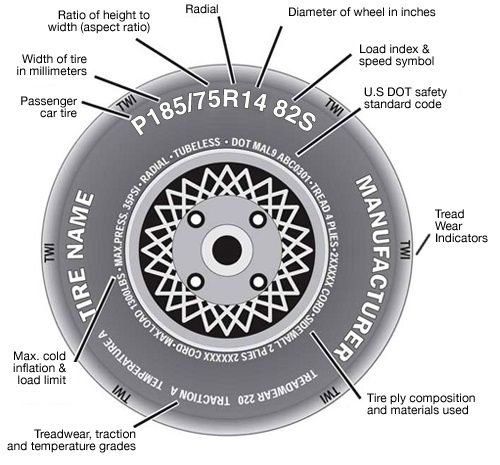 First of all, you should check what the car is “shod” in - it can be idle for a long time, especially if the transaction takes place in the car market. Winter wheels are divided into two types: studded and friction.
First of all, you should check what the car is “shod” in - it can be idle for a long time, especially if the transaction takes place in the car market. Winter wheels are divided into two types: studded and friction.
Equally important is the tread depth. For 100%, it is customary to take the tread depth of new tires, 0% - unusable, respectively. The minimum permitted tread depth for winter tires is 4 mm, otherwise 0%. From the factory, tires are produced with different depths. Keep in mind that if the initial depth reached 8 mm, then 4 mm is not 50% wear, as some sellers say.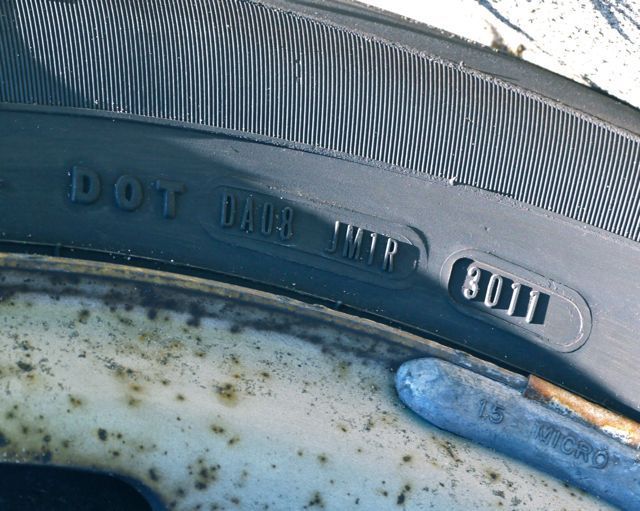
A buyer's vigilance will be a guarantee of a good deal. Bad tires in the general good condition of the car is not always a reason to refuse a purchase. If the wear is natural and even, and also corresponds to the average life of tires, the option of purchasing a car is worth considering. You can always eventually replace the rubber with one that will inspire confidence.
In order to avoid doubts about the history of the purchased car during the inspection, check the history of the car using the Autocode online service. To obtain a complete report, only the VIN, chassis number or state number of the vehicle of interest is required.
By driving in unique car numbers, you will receive the following data:

If you are a professional car dealer, you can also use the Autocode Profi service of unlimited car checks. Autocode Profi allows you to quickly check a large number of cars, add comments to reports, create your own lists of liquid vehicles, quickly compare options and store vehicle data in an orderly manner.
Tire wear or other negative factors may be hidden by the seller. So that they do not subsequently lead to problems in other parts of the machine, order an on-site Autocode check. The specialist will arrive at the place at any time and conduct a professional inspection of the vehicle. Checking the machine through Autocode will help to verify the correctness of your assumptions or refute them.
If there are no serious problems in the history and technical part of the car and you decide to buy, take the final step - enter the seller's passport data through the car owner verification service. This service will show whether he has problems with the law, whether his passport is valid, whether there are debts and enforcement proceedings.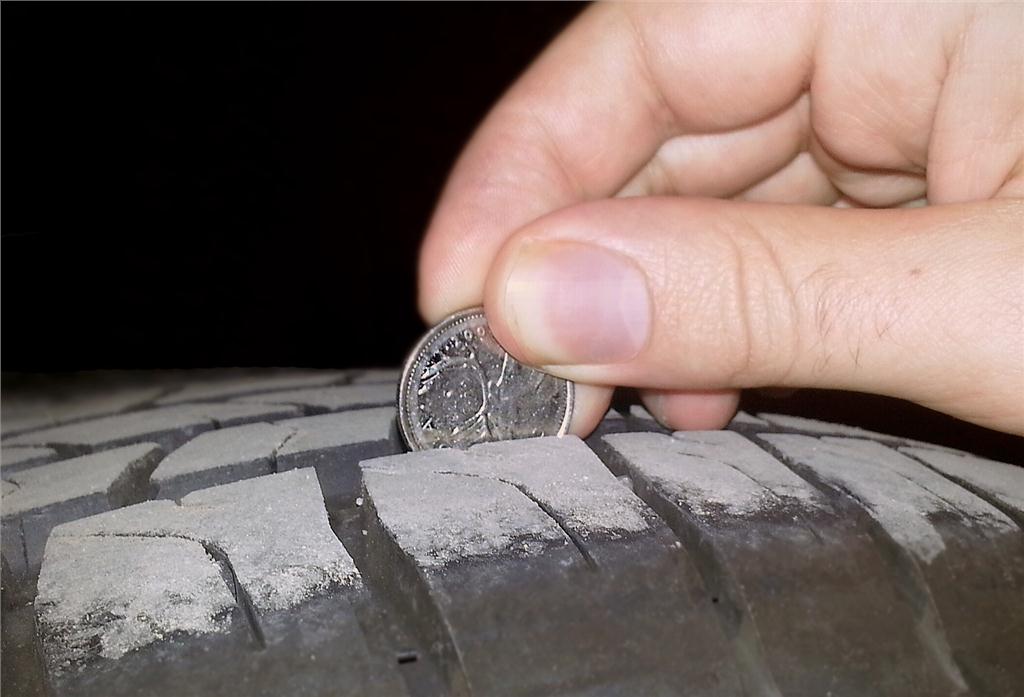 If the audit finds serious problems, it is better to refuse the deal. View sample report
If the audit finds serious problems, it is better to refuse the deal. View sample report
In the spring - from winter to summer.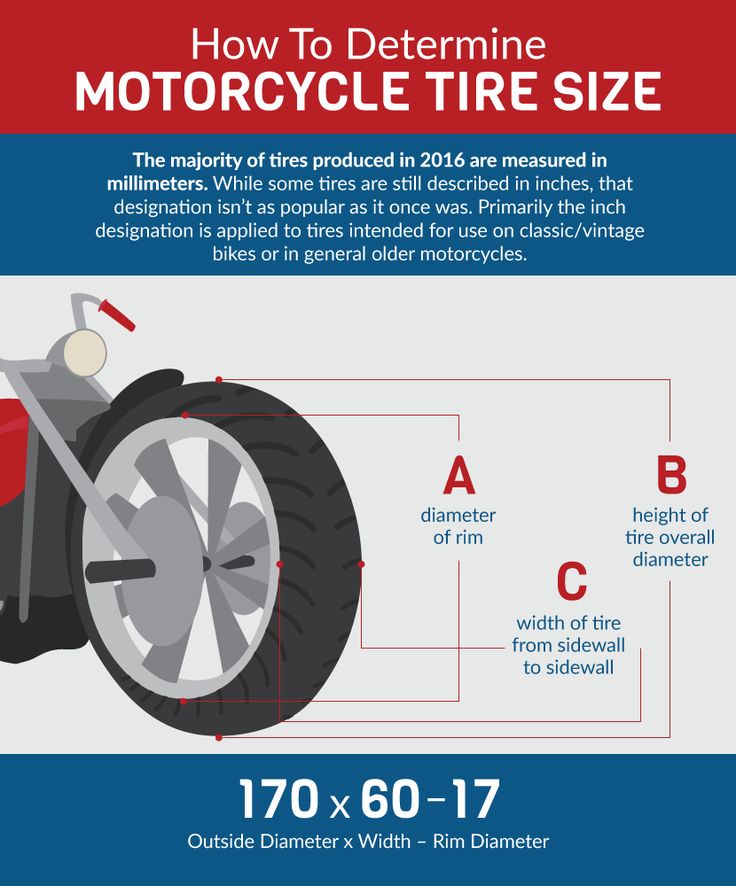 There are no strict requirements in the regulatory documents: it is recommended to use winter tires from December to February, and summer tires from June to August. There are requirements for studded tires: they cannot be used from the first of June - for this they can be warned or fined 500 R. From winter to summer, they change shoes at an average daily temperature above +7 ° C. After this mark, winter tires wear out quickly and hold the road poorly.
There are no strict requirements in the regulatory documents: it is recommended to use winter tires from December to February, and summer tires from June to August. There are requirements for studded tires: they cannot be used from the first of June - for this they can be warned or fined 500 R. From winter to summer, they change shoes at an average daily temperature above +7 ° C. After this mark, winter tires wear out quickly and hold the road poorly.
Rules of the Customs Union "On the safety of wheeled vehicles"
In autumn - from summer to winter. It's time to change tires if the average daily temperature drops below +10 °C: summer tires become dull, grip becomes worse. In autumn, it is much more difficult to sign up for a tire fitting: the closer the frost, the longer the appointment. People are afraid of ice, the prospect of hitting someone else's car or flying into a ditch.
What to do? 02/21/20
Wheels scratched at my car service
Car tires are consumables. In addition to seasonal replacement, it is important to replace them as soon as they are worn out or seriously damaged.
In addition to seasonal replacement, it is important to replace them as soon as they are worn out or seriously damaged.
When the tire is worn. Each car tire has a wear indicator - a special jumper between the tread islands. As soon as the tread wears off and matches the level of at least one of the indicator jumpers, it's time to change the tire. Such a tire is dangerous, especially on wet surfaces.
/carservice/
How to save money on car operation
Insufficiently high tread poorly removes water from the tire contact patch with the roadway. Where you can confidently drive 70–80 km/h on new tires, on worn tires you can lose control of the car already at a speed of 55–60 km/h.
Indicator bar on a tire that has been through a season and a half Some manufacturers apply their own wear indicators in addition to the standard ones. For example, on Nokian tires, numbers are cut in the middle of the tread: the larger the number, the deeper the cut.
A relatively new tire will have a lot of numbers, a worn one or two will remain - the rest will be erased. A drop with a cross is applied to the sidewall of the Continental tire. As soon as it is worn down to half, the tire should be considered worn out and replaced. But all these are rather exceptions - most tires do not have such indicators.
Wear may be uneven. If the tire has been inflated, the center of the tread will be worn off. If the tire pressure was too low, it will be relatively fresh and the sidewalls of the tread will be worn out.
Non-standard wear indicators. From left to right: Nokian with numbers - summer and winter, Continental summer - with a drop and a cross Tire that was pumped over: wear on the central part of the tread is much stronger It also happens that either the inner or outer side of the tread wears out on one wheel. This means that the camber is broken - the angle of the wheel relative to the vertical plane. In this case, it is important to sign up for wheel alignment - this is a service during which the wheel alignment angles are adjusted.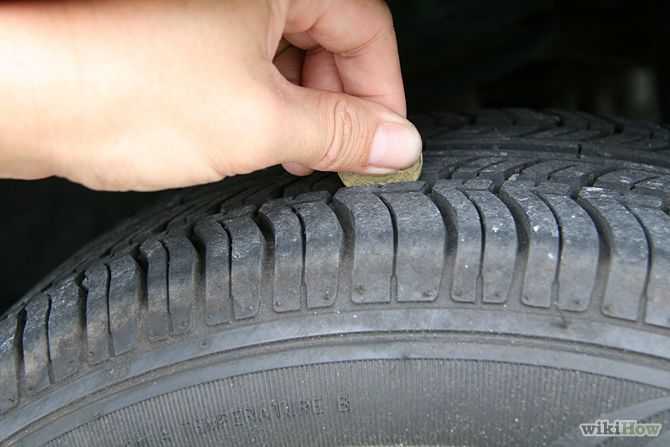
It happens that the angles of the wheels are not adjusted. For example, if the car has been in a serious accident and its power parts of the body or suspension parts are deformed. In this case, you will have to eliminate these malfunctions, and then go to the wheel alignment stand again.
/sud-autoservice/
As I sued the auto service
Sawtooth or comb wear occurs on winter tires if the toe-in is broken - the angle of the wheel in the horizontal plane. Sign up for a wheel alignment so that the same wear does not appear on the new tire.
Uneven tread wear. The tire was on a wheel with unadjusted camber Comb-shaped tread wear. Source: mashintop.ru When the tire is damaged and it is noticeable. It is easy enough to damage a tire: cut the sidewall, run into a piece of reinforcement or get hit, in place of which a hernia will come out. All sidewall damage is a good reason to buy a new tire: repairs will be expensive and ineffective. Damage to the working part of the tire - the tread - is less critical.
Damage to the working part of the tire - the tread - is less critical.
When damage is present but not visible. Hidden damage may appear on the back of the wheel. For example, a driver caught a hole, felt a good hit, got out, saw that everything was in order, and drove on. And on the reverse side, a piece of rubber was torn out and the cord became visible - the metal carcass of the tire. Such damages are found only when inspecting the chassis or at a tire fitting, and this is bad: they can cause an accident or serious damage to the car.
Service life of car tires. The tire life recommended by most manufacturers is five years, but this does not mean that they cannot be used for the sixth year. The expiration date is not limited by any documents.
GOST R 52900-2007
Tire manufacturers estimate tire service life differently. Nokian provided the most detailed explanation: “Tire life is not defined by law, but tires can only be considered new if they have been manufactured within the last five years. The recommended tire life is 6 years and the maximum is 10 years. Then the tire loses its consumer properties: grip deteriorates, vibration may appear on the body or steering wheel.
The recommended tire life is 6 years and the maximum is 10 years. Then the tire loses its consumer properties: grip deteriorates, vibration may appear on the body or steering wheel.
5 years
tire life recommended by most manufacturers
Storage location - less than a meter away from direct sunlight and heaters. In the sun, near the battery and in the rain, the tire will quickly lose its properties: the rubber will dry out and collapse. Permissible temperature - from -30 to +35 ° C, humidity - 50-80%. Do not leave the wheels dirty; they must be thoroughly washed before seasonal storage. Tires can be stored under a canopy in the open air for no more than a month.
GOST 54266-2010
The method of storage depends on the set: either tires separately or wheels as an assembly. Tires up to 205 mm wide can be stored in even stacks up to 2 m high. Tires from 210 mm are stored vertically - on edge. Every three months, all tires, regardless of width, should be rotated to change the footprint.
Every three months, all tires, regardless of width, should be rotated to change the footprint.
GOST does not explain how to store the wheels as an assembly, but Nokian has a visual manual for storage. Continental recommends hanging wheels by rims or storing them in a stack, similar to tires, turning them over every 4 weeks. It is advisable to reduce the air pressure in the tire to 1-1.5 atm and not make stacks of wheels - a tire plus a disk - more than four pieces.
Nokian Tire Storage TipsPDF, 2.1 MB
Featured Articles for Motorists
How to drive without fines and not overpay for car maintenance - in our mailing list along with other materials about money
First of all, you need to decide which tires are suitable. All important characteristics are written on the sidewall of the tire.
The dimensions of the tire are important to consider when selecting it for a specific car and rim. All options provided for by the design of the car are written on special plates.
All options provided for by the design of the car are written on special plates.
Depending on the brand of car, they can be found on the gas tank flap or on the B-pillar in the driver's doorway. The recommended tire pressure is also written here.
/usedcar/
How to buy a used car
Decal with Mini John Cooper Works tire parameters in the doorway: size and recommended pressure at different loads Decal on the gas tank flap of the Skoda OctaviaTire sizes are indicated in the format xxx/xx Rx. They are on the sidewall of the tire.
The first parameter is the tread width in mm. The size step is 10 mm, always 5 at the end. Next is the tire profile, or its height as a percentage relative to the width. The width of a tire with parameters 235/55/R16 is approximately 129 mm, and for a tire 195/55/R16 it is 107 mm.
R - an indication of the type of tire, in this case, that it is radial. There are also diagonal ones, but this is an outdated design. These have not been used for cars for a long time. The difference is in the design of the cord. A popular misconception is that R is a radius.
These have not been used for cars for a long time. The difference is in the design of the cord. A popular misconception is that R is a radius.
The last two digits are the diameter of the rim in inches, on which the tire can be placed.
It is undesirable to deviate from the tire parameters recommended by the car manufacturer. This can adversely affect handling, as well as cause the tire to rub against the wheel arch or suspension parts: this will damage the tire and increase the likelihood of an accident.
It happens that on the front and rear axles from the factory there are disks for rubber of different sizes. Usually we are talking about the width - the rear wheels can be wider than the front. In the people, such a set of disks is called a different-wide one.
Tube or tubeless construction. Previously, a car wheel consisted of three main parts: a disc, a tube, and a tire. The tire was responsible only for traction and overall strength, the chamber was a container for air. This design had serious drawbacks:
This design had serious drawbacks:
Now you can find a tube tire on a car only in a museum or in your grandfather's garage: the technology is outdated.
Modern tubeless tires do not have these drawbacks. Special protrusions in the disks — hubs, for which the tire clings, help to maintain the tightness of the tubeless wheel.
Manufacturers still mark tubeless tires with a special tubeless mark, and those intended for use with a tube - tube type, but now these are only rare domestic models Cord construction type. Each tire is multi-layered, a single rubber product will not be able to provide the desired shape and strength. Therefore, inside the tire there is a cord - a kind of carcass. The cord can be metal, synthetic fibers or textile threads. According to the method of laying the cord, tires are divided into radial and diagonal.
Therefore, inside the tire there is a cord - a kind of carcass. The cord can be metal, synthetic fibers or textile threads. According to the method of laying the cord, tires are divided into radial and diagonal.
| Bias tire | Radial tire |
|---|---|
| 2 or more cords | 1 ply cord |
| Smaller contact patch | Larger road contact patch |
| Tire heavier than | Lighter tire |
| Used on commercial vehicles | Used on passenger cars |
| Cheaper than | Expensive |
Bias
Radial tire
2 layers of cord or more than
1 layer of cord
Less contact stain with an expensive
SPECTION with an expensive
tire
Tires lighter than
are used on commercial equipment
used on cars
Cheaper
More expensive
Radial tire cords are parallel to the wheel circumference, on top of each other. For diagonal tires, the cord layers overlap each other diagonally. Source: Kolobox
For diagonal tires, the cord layers overlap each other diagonally. Source: Kolobox DOT marking. The name comes from the American Department of Transportation - an analogue of our Department of Transportation. In 1978, this department approved mandatory labeling for all automobile tires, which includes Treadwear, Traction, and Temperature grades marked on the sidewall. Now most manufacturers use this system, selling tires without such marking is illegal in the USA.
Treadwear. Some people want tires to last as long as possible, others want good grip. So far, these qualities have not been learned to combine in one tire.
The wear rate of a tire is indicated by the Treadwear index. Typically, for products for passenger cars, this parameter ranges from 100 to 600. In terms of kilometers, this is approximately 10,000-15,000 km per hundred points. For example, index 240 corresponds to 24,000-36,000 km. At the end of the range there will be tires that were used with a calm driving style.
At the end of the range there will be tires that were used with a calm driving style.
Traction also shows the grip class, but unlike Russian traffic rules and technical regulations, the classification is based not on distance in meters, but on the deceleration coefficient - G, which the tire can provide. According to Traction, all tires are divided into classes according to their ability to effectively stop a car on wet asphalt and concrete: from the best AA to the worst C.
| Class | G on asphalt | G on concrete |
|---|---|---|
| AA | More than 0.54 m/s² | 0.38 m/s² |
| A | More than 0.47 m/s² | 0.35 m/s² |
| B | More than 0.38 m/s² | 0.26 m/s² |
| C | Less than 0.38 m/s² | 0.26 m/s² |
Grade AA
G on asphalt
More than 0. 54 m/s²
54 m/s²
G on concrete
0.38 m/s²
class A
G on the asphalt
more than 0.47 m/s²
G on concrete
0.35 m/s²
Class B
G on asphalt
more than 0.38 more m/s²
G on concrete
0.26 m/s²
Class C
G on asphalt
less than 0.38 m/s²
G on concrete
0.26 m/s²
Temperature characteristic, Temperature. All tires are divided into three classes according to the resistance to heat generation during movement: A, B and C. Class A tires effectively remove heat at speeds over 185 km / h, class B - from 160 to 185 km / h, class C - from 137 up to 160 km/h. For passenger cars, there are almost no tires on sale, except for class A.
Run flat. This rubber has a thick and stiff sidewall. It can be driven up to 80 km at speeds up to 80 km/h after a puncture or side cut with a complete loss of pressure.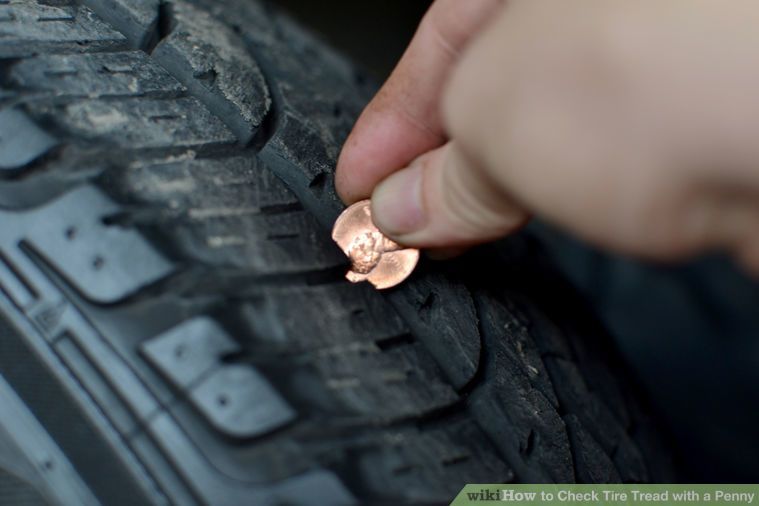
It is important that the machine is equipped with a tire pressure system, otherwise the driver may not recognize a flat tire, exceed the recommended speed, or drive more than 80 km, which at best will lead to damage to the rim, and at worst, to an accident.
Many vehicles come with runflat tires from the factory. Especially on those who do not have a spare tire. Such tires are 1.5-2 times more expensive than ordinary ones, they make driving less comfortable: due to the hard sidewall, such rubber smooths out bumps much worse and is heavier than conventional tires.
But you don't have to call a tow truck: you can almost always get to the tire shop on your own. If you drive on a relatively flat road, there will be no damage to the alloy wheel: it is still a few centimeters from the road surface.
/otozvali/
How to repair a car under a recall campaign
Load and maximum speed indices. Load Index is a two- or three-digit number that indicates the maximum weight that a tire can support.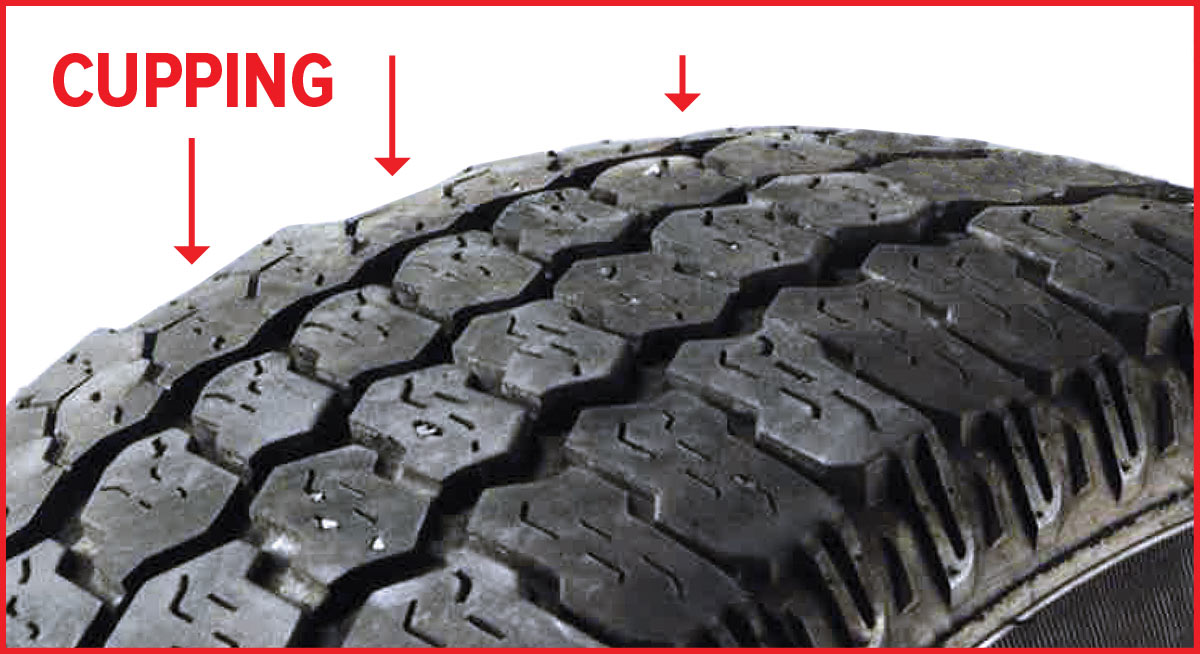 The speed index is denoted by a Latin letter. It shows the maximum allowable speed that the tire can withstand. All indices are summarized in tables.
The speed index is denoted by a Latin letter. It shows the maximum allowable speed that the tire can withstand. All indices are summarized in tables.
| Speed index | Maximum speed, km/h |
|---|---|
| L | 120 |
| M | 130 |
| N | 140 |
| P | 150 |
| Q | 160 |
| R | 170 |
| S | 180 |
| T | 190 |
| U | 200 |
| H | 210 |
| V | 240 |
| W | 270 |
| Y | 300 |
| Z | 300+ |
Speed index
Maximum speed, km/h
If you want to know how to read the load index, find your value in the table.
1120
113
11503
114
1180
115
1215
116
12503
117
1285
118
1320 9000 9000 9000 9000 9000 9000 9000 9000 9000 9000 9000 9000 9000 9000 9000 9000 9000 9000 9000 9000 9000 9000 9000 9000 9000 9000 9000 9000 9000 9000 9000 9000 9000 9000 9000 9000 9000 9000 9000 9000 9000 9000 9000 9000 9000 9000 9000 9000 9000 9000 9000 9000 9000 9000 9000 9000 9000 9000 9000 9000 9000 9000 9000 9000 9000 9000 9000 9000 9000 9000 9000 9000 9000 9000 9000 9000 9000 9000 9000 9000 9000 9000 9000 9000 9000 9000 9000 9000 9000 9000 9000 9000 9000 9000 9000 9000,000
121
1450
122
1500
| Load index | Weight per tire, kg | Load index | Weight per tire, kg | Load index | Weight per tire, kg |
|---|---|---|---|---|---|
| 62 | 265 | 83 | 487 | 104 | 900 |
| 63 | 272 | 84 | 500 | 105 | 925 |
| 64 | 280 | 85 | 515 | 106 | 950 |
| 65 | 290 | 86 | 530 | 107 | 975 |
| 66 | 300 | 87 | 545 | 108 | 1000 |
| 67 | 307 | 88 | 560 | 109 | 1030 |
| 68 | 315 | 89 | 580 | 110 | 1060 |
| 69 | 325 | 90 | 600 | 111 | 1090 |
| 70 | 335 | 91 | 615 | 112 | 1120 |
| 71 | 345 | 92 | 630 | 113 | 1150 |
| 72 | 355 | 93 | 650 | 114 | 1180 |
| 73 | 365 | 94 | 670 | 115 | 1215 |
| 74 | 375 | 95 | 690 | 116 | 1250 |
| 75 | 387 | 96 | 710 | 117 | 1285 |
| 76 | 400 | 97 | 730 | 118 | 1320 |
| 77 | 412 | 98 | 750 | 119 | 1360 |
| 78 | 425 | 99 | 775 | 120 | 1400 |
| 79 | 437 | 100 | 800 | 121 | 1450 |
| 80 | 450 | 101 | 825 | 122 | 1500 |
| 81 | 462 | 102 | 850 | 123 | 1550 |
| 82 | 475 | 103 | 875 | 124 | 1600 |
Pressure index is another name for the load index.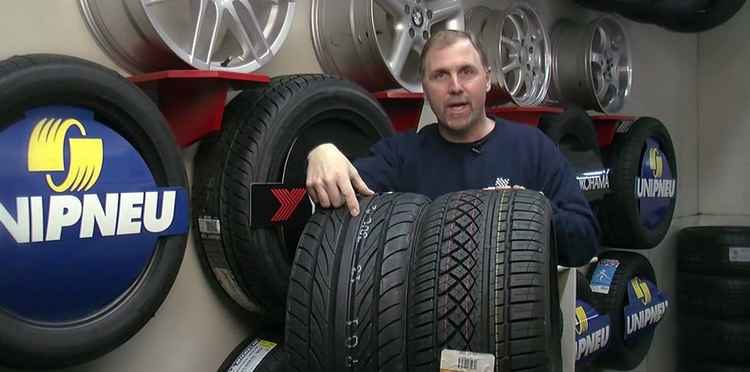
Euro label. Manufacturers put special stickers on tires. They have three parameters that are not written about on the bus itself. These stickers appeared in 2012. Since then, they have been on any tire sold in the EU.
The sticker complies with EC Regulation 1222/2009. This is a complex document with formulas and parameters like rolling resistance - it does not have the usual values like fuel consumption or braking distances. The sticker describes the tire according to three characteristics: noise level, fuel economy class and wet grip class.
/top-economic-cars/
11 economical cars for everyday driving
Noise shows the noise level in decibels. One black sound wave is 3 or more decibels below the 2016 European norm. Two waves - at the normal level or quieter, but less than 3 decibels. Three - noisy tire, out of limit.
Fuel economy class. A is the most economical.![]() The lower the class, the more the tire resists rolling and the higher the fuel consumption. There is a 7.5% difference in fuel consumption between the most economical class A tire and the most "wasteful" class G. That is, for an average car with a consumption of 10 liters per 100 km and an annual mileage of 25,000 km, class A tires will save up to 187 liters of fuel - 8000 R.
The lower the class, the more the tire resists rolling and the higher the fuel consumption. There is a 7.5% difference in fuel consumption between the most economical class A tire and the most "wasteful" class G. That is, for an average car with a consumption of 10 liters per 100 km and an annual mileage of 25,000 km, class A tires will save up to 187 liters of fuel - 8000 R.
Road grip. Same letters, but without color indication. This estimate was obtained when checking the braking distance on asphalt. The shorter the stopping distance, the closer the letter is to the beginning of the alphabet. The difference between A and G is more than 18 meters: A is the minimum stopping distance, B is plus 3 meters to A, C is plus 7 meters to A, D is plus 10 meters to A, E is plus 12 meters to A, F is plus 18 meters to A.
Sticker on a new tire Color markers on tires. There are another colored stripes on the tire tread - these are technological marks, they are of no use to the buyer. These drawings guide the production line, and they can also show the batch and release date.
These drawings guide the production line, and they can also show the batch and release date.
The most pedantic car owners may try to buy a set of new tires with identical stripes, but it is better to focus on the stamp with the release date on the sidewall.
Features of the choice of all-weather tires. Theoretically, they can be ridden all year round. The rubber compound works in the temperature range from -7 to +15 °C. In severe frosts, rubber hardens like summer tires at temperatures below +10 °C, and in hot weather it becomes softer, like winter tires at temperatures above +7 °C. In any case, all-season tires are not suitable for either hot asphalt or ice ruts.
All-season tires are chosen when they want to save on tire fitting and buying an extra set of tires. This is true for crossovers and SUVs with relatively low annual mileage.
Features of the choice of summer tires.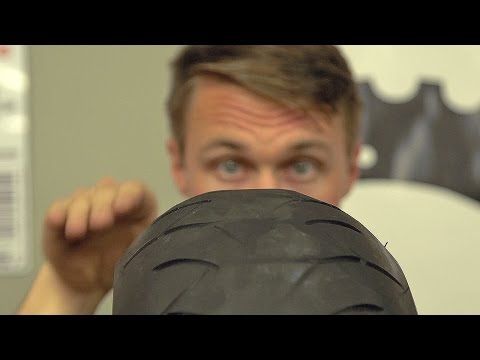 There are models for quiet city driving. Such tires will help save fuel, please with a low noise level and will last three to four seasons. At the same time, they will not tolerate overheating, will not provide perfect grip on the road and will not allow you to drive a car with great comfort.
There are models for quiet city driving. Such tires will help save fuel, please with a low noise level and will last three to four seasons. At the same time, they will not tolerate overheating, will not provide perfect grip on the road and will not allow you to drive a car with great comfort.
The opposite - tires for those who like to push the gas to the floor. Such tires will make noise, increase fuel consumption and wear out in one or two seasons. In return, the driver will get excellent grip and driving pleasure.
Features of the choice of winter tires. Winter tires come in three types.
The studded tires are good for driving on ice and packed snow. They have relatively hard rubber, deep tread and studs. And they also hold the road well on asphalt: the spikes have been hidden in the tread for a long time.
Ideal conditions - ice cover above -15°C. The ice is soft enough for the spikes to grip most effectively.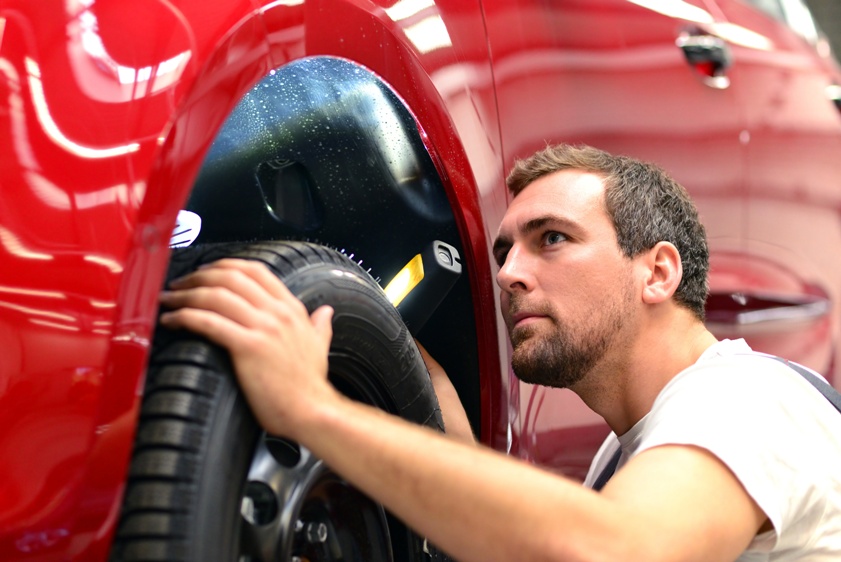
Disadvantages: they are very noisy, they have a low speed index. Usually, you can drive on studded tires no faster than 160-180 km/h. And they are also banned in many European countries because they spoil the asphalt.
Scandinavian style friction tires, aka Velcro, studless and made for harsh winters. Rough tread pattern, soft rubber compound and many sipes - horizontal slots on the islands of the tire tread.
Ideal conditions are snow and ice below -15°C. They are noticeably quieter, you can move at a much higher speed on them.
Disadvantages: such tires wear out quickly, almost do not hold the car on melted smooth ice at temperatures above -5 °C. There is a small distance between the tread islands, such tires do not drain water well from the contact patch with the roadway.
Alpine type friction tires without studs and made for mild winters. There are 1.5-2 times fewer sipes on the tread, the grooves for water drainage are much wider. This is the most wear resistant winter tire.
This is the most wear resistant winter tire.
Ideal conditions - puddles, asphalt, -5 to +3 °C. Well remove water from the contact patch with the roadway.
Disadvantages: poor grip on any ice and packed snow.
According to the Rules of the Road, different tires cannot be put on one axle of a vehicle. This is considered a malfunction in which the use of a car is prohibited.
p. 5 of the Traffic Regulations of the Russian Federation: wheels and tires
At the same time, the rules do not prohibit installing tires of different brands and models on different axles of the same car, but it’s better not to do this. The car and all its systems are designed for the same tires with the same grip.
This is especially true for modern cars with many electronic assistants: stabilization systems, brake force distribution. You can drive on such a combination of tires, but no one knows how the car will behave in an extreme situation.
Like everywhere else, there are premium brands and there is something cheap. But cool brands have failed models, while budget brands have successful ones.
There is a lot of research and testing behind famous brand tires. Before entering the market, large companies test each new model in the most extreme conditions. Tires can be rolled on arctic ranges or in the desert.
Often, rubber is tested in the conditions of sports competitions and only then the technology is sent to the mass market. The more famous the manufacturer and the more expensive its products, the greater its budget for the development of new models.
There are also very cheap tires, often from China. They can directly write that they copied the tread pattern of a prestigious model, but this is not enough: there is also a rubber composition, cord design and other parameters.
Prices for tires of the same size may differ by multiples. The smaller the profile and the larger the width, the greater the difference.
To look at something other than the brand and choose what you need, there is an algorithm:
Specialized stores. There is a large selection, manufacturers' catalogs and competent advice. This will appeal to those who buy car tires for the first time or are simply not very interested in the technical side of cars. There is a service here - there will be a guarantee for tires, there is tire fitting and seasonal storage.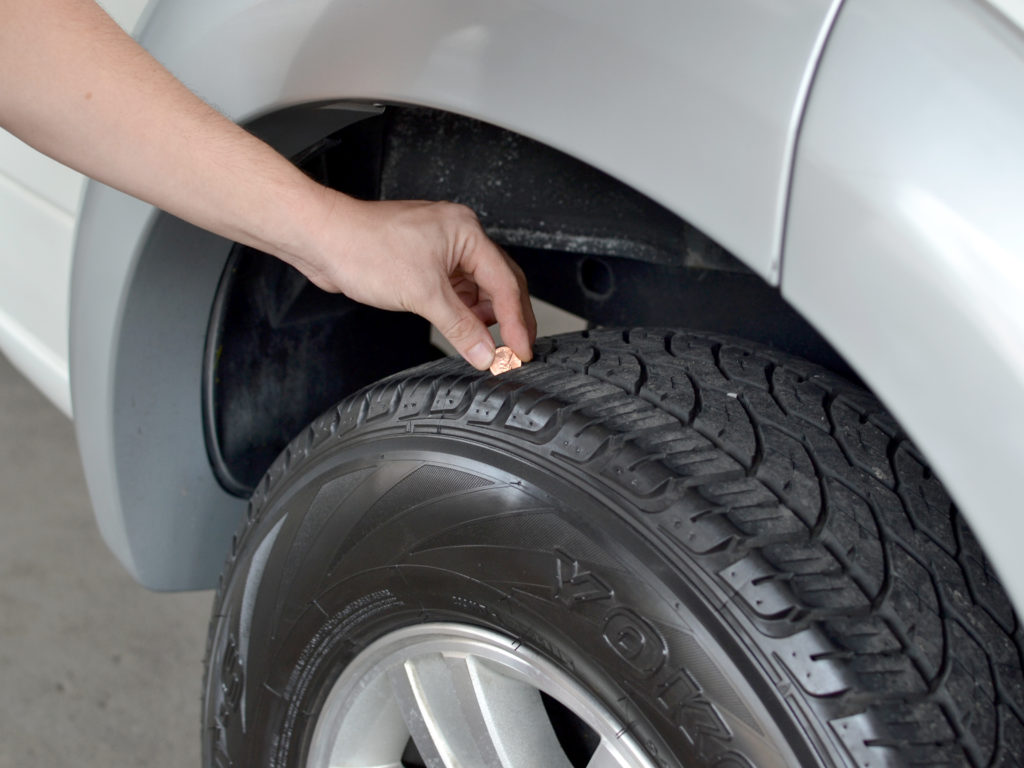 The one-stop principle works: you can arrive on spikes and leave on a new summer and with an empty trunk.
The one-stop principle works: you can arrive on spikes and leave on a new summer and with an empty trunk.
Online hypermarkets and warehouses. Rubber is sold by large Internet sites and small shops. The option is suitable for those who want to find cheaper, are ready to take risks and waste time for this. Here, the entire responsibility for checking the parameters of the tire, the date of its release and, in general, compliance with the order lies with the buyer. If something goes wrong, you will have to take all four tires to no one knows where and change them. Tire fitting and storage is the buyer's concern.
/save/mashina-hack/
How to save on car maintenance?
Flea markets, car club forums and ad services. Avito, Yulia and specialized automotive forums offer a lot of rubber. You can buy a completely fresh set at a good price, or you can buy rubbish and expensive. There is a great risk of buying tires with hidden damage: the fact that the tire is crooked will only be opened at a tire fitting, many hernias will be visible only on an inflated tire.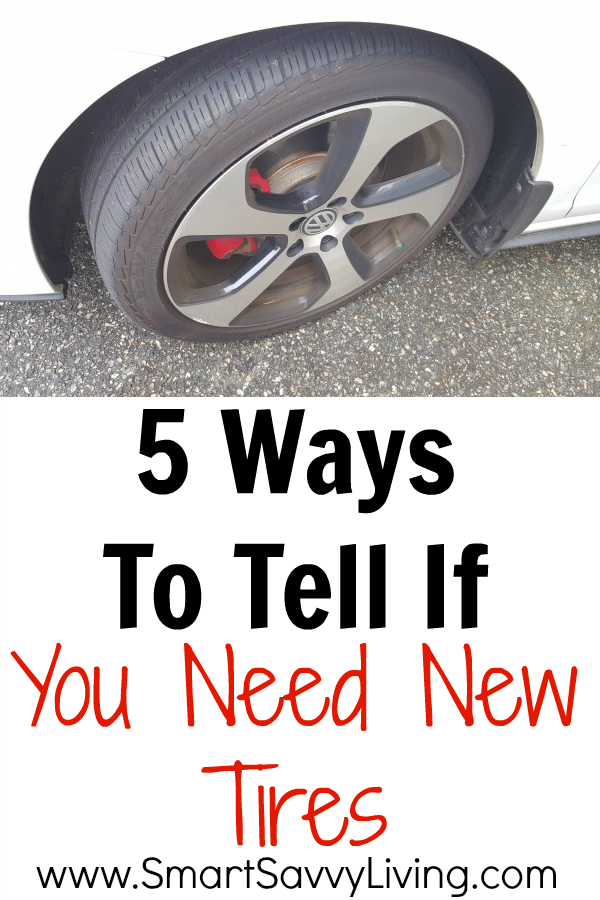
Sometimes the ability to measure depth and read parameters does not help. To put the correct year on an old tire, there is a special stamp. The tread depth can be machined, and a tire that is white from old age can be treated with ink.
With the help of special equipment, you can even remove the remnants of the old protector and stick a new one. It remains to hope for the reputation of the seller and look at the goods that he sells or sold. I try to avoid those who sell used rubber all the time.
First of all, the size. The larger the diameter, the more expensive. But at the same time, the lower the tire profile, the more expensive it is. This may seem counterintuitive, as less material is used.
Tire inner layers and construction play an important role. Due to the low profile height, the sidewall of such a tire must be much stronger than the same tire with a high profile.
Tire make and model affected. Rubber from large, famous brands with a century of history is more expensive, but the budget lines of well-known companies will allow you to save a lot.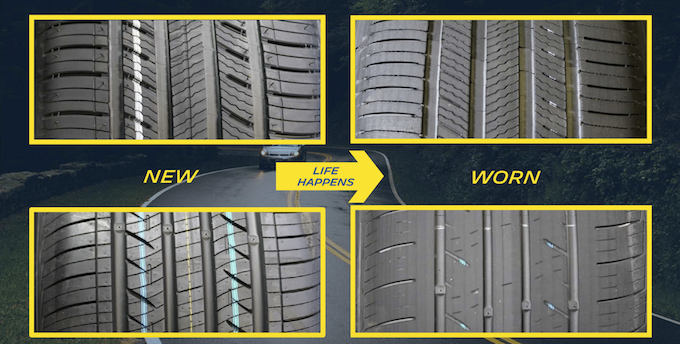 Tires of young, unknown manufacturers, especially Asian ones, will cost even less.
Tires of young, unknown manufacturers, especially Asian ones, will cost even less.
Tires with runflat technology are more expensive than conventional tires, because their sidewalls have special requirements.
Is it worth buying retreaded tires? It is almost impossible to buy such tires for a passenger car in Russia in 2021. The cord design of car tires for projector restoration is not intended, unlike truck tires, for which this is a very popular service. In some countries in Eastern Europe, you can buy retreaded tires in popular sizes, but their properties are mediocre: long braking distances, poor handling.
When is the best time to buy tires? The popular theory that tires are best bought between seasons is no longer valid. You won’t be able to save money this way: the price of tires almost does not change throughout the year.
The tire business is seasonally cyclical, and it is not worth hoping for discounts on studded tires and its wide selection in June. For the next winter season, it will be delivered in August, and summer tires in March.
For the next winter season, it will be delivered in August, and summer tires in March.
But by the season, the freshest tires will be on sale. This is true for those who drive very little, or for sports tires. The fresher the tire, the better the grip will be: the rubber compound loses its properties over time.
Always make sure that your tire pressure is correct: it has a critical effect on tire health. If you lose pressure, do not continue driving on an empty wheel: this may destroy the tire.
Try not to store tires and the car within half a meter of heaters.
Old tires cannot simply be thrown in the trash or buried. This is hazard class 4 waste, they must be disposed of.
GOST 12.1.007-76
Tires can be sold on Avito or other ad service. It will turn out if there is no serious damage and the tread depth allows them to be used further.
Old tires are readily picked up by a tire shop.